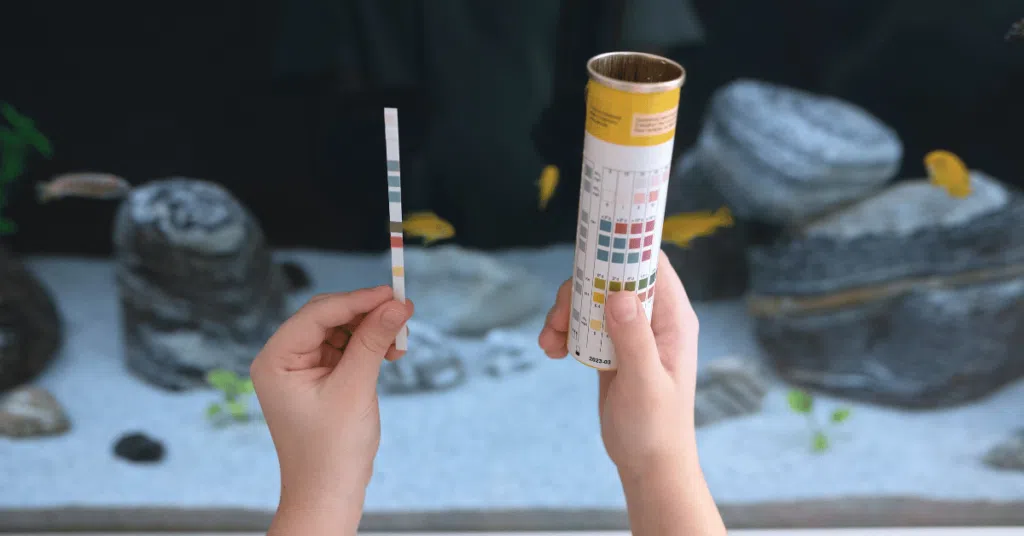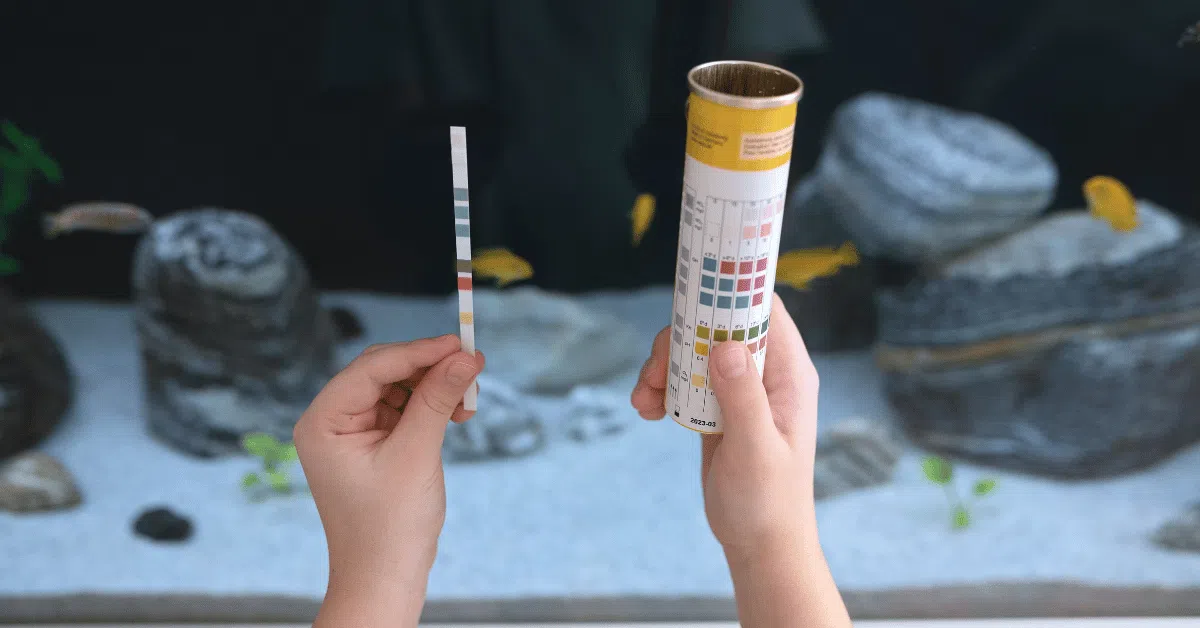Saltwater aquarium water parameters Keeping a reef tank is not for the faint-hearted. Water parameters are everything, so if you forget about the rest of the aquarium maintenance, that is fine.
However, do not slack off on the above water parameters important for keeping saltwater aquariums. Reading a “Reef Tank Water Parameters Chart” and understanding why the “Saltwater KH level ppm” is important.
Sort Brief of Article
ToggleSaltwater aquarium water parameters
- Temperature: 24-26°C
- Salinity: 1.023-1.025
- pH: 8.1-8.4
- KH: 8-12 dKH
Maintaining Parameters for a healthy saltwater tank is crucial.

Reef Tank Water Parameter Chart
Parameter Ranges One or more charts are used to review normal ranges quickly. Each parameter has target ranges depending on what tank critters you try to keep healthy.
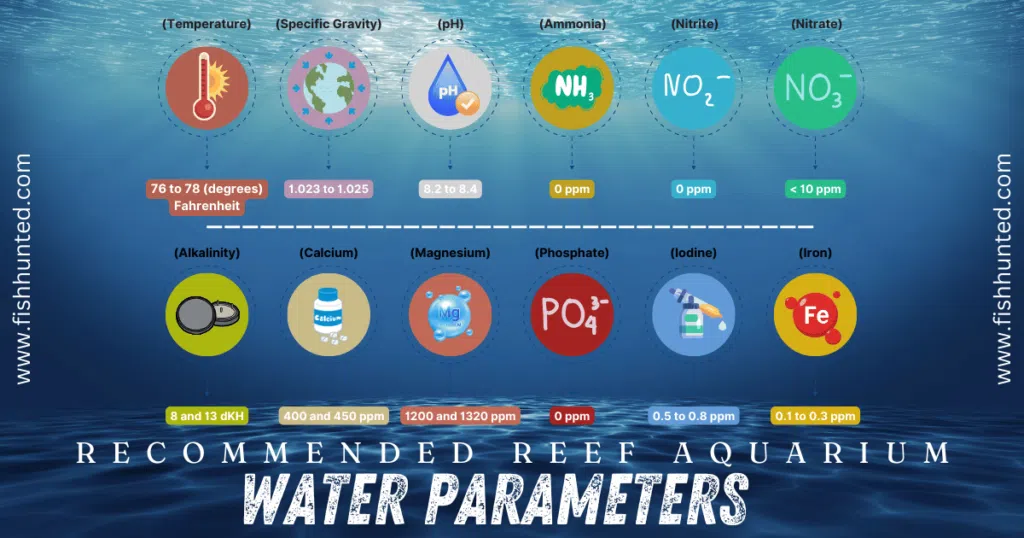
Tracking Changes Monitoring on a regular basis lets us see trends, which in turn will help with problem-solving later on.
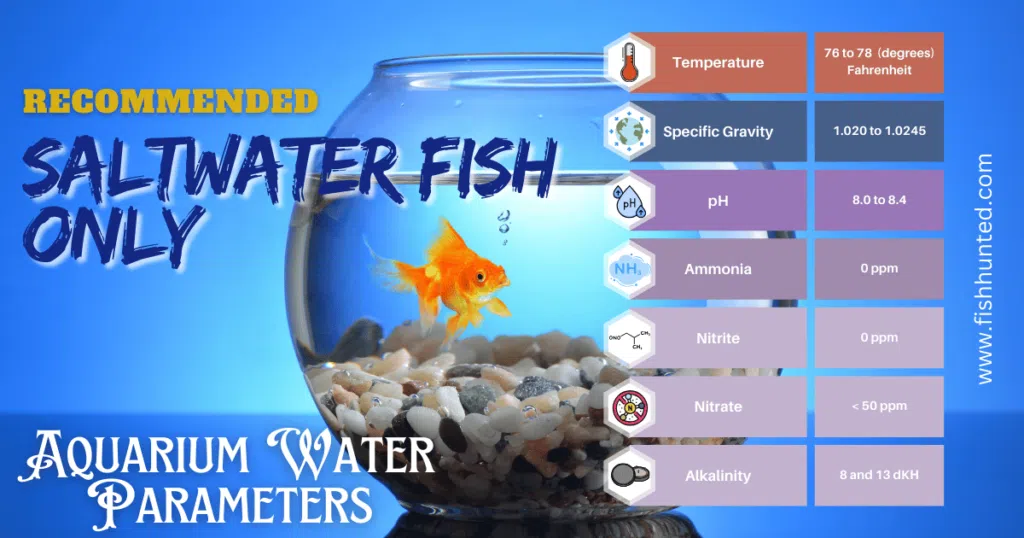
Why is Saltwater KH Level PPM Important?
Role of KH in Aquariums KH holds a stable pH and is also very important to healthy coral. A low KH can cause pH swings, which are detrimental to marine organisms.
Maintaining Saltwater KH Levels Avoid any swing in KH.
Managing Water Quality
Regular Testing
Test Kits: Buy good-quality test kits and test everything regularly. Testing regularly helps catch any drift early.

Water Changes
Frequency Frequent water changes. Technique You should use premixed saltwater with the desired parameters of the tank to avoid shocking the system.
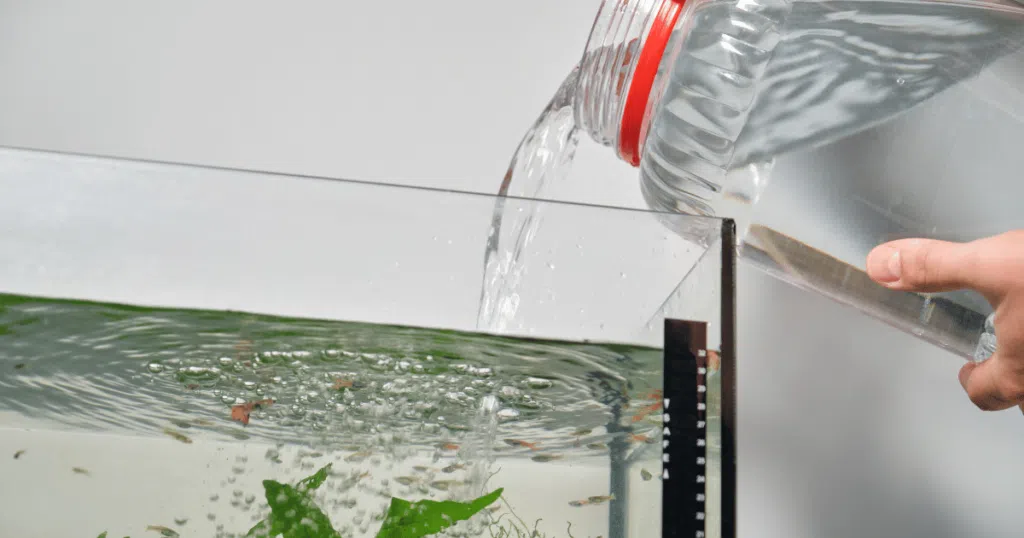
Maintaining Stability
Avoiding Fluctuations Marine life can be stressed if water parameters change suddenly. Adjust slowly to keep things stable
Dealing with Common Issues
Algae Blooms
Causes Algae blooms are often the result of too-high nitrates and phosphates.
Prevention Water changes and controlled feeding help reduce the level of nutrients that cause algae.
Coral Bleaching
Causes Changes in water parameters, especially temperature and light, rapidly lead to coral bleaching.
Prevention: Keep stable conditions and avoid intense lighting.
Advanced Reef Tank Care Tips
Homemade Tricks
Ingredients For example, alkalinity can be adjusted with items. Commonly found in your kitchen, like baking soda.
Application Gently sprinkle as you stir and pour in slowly to control the alkalinity shock in the system.
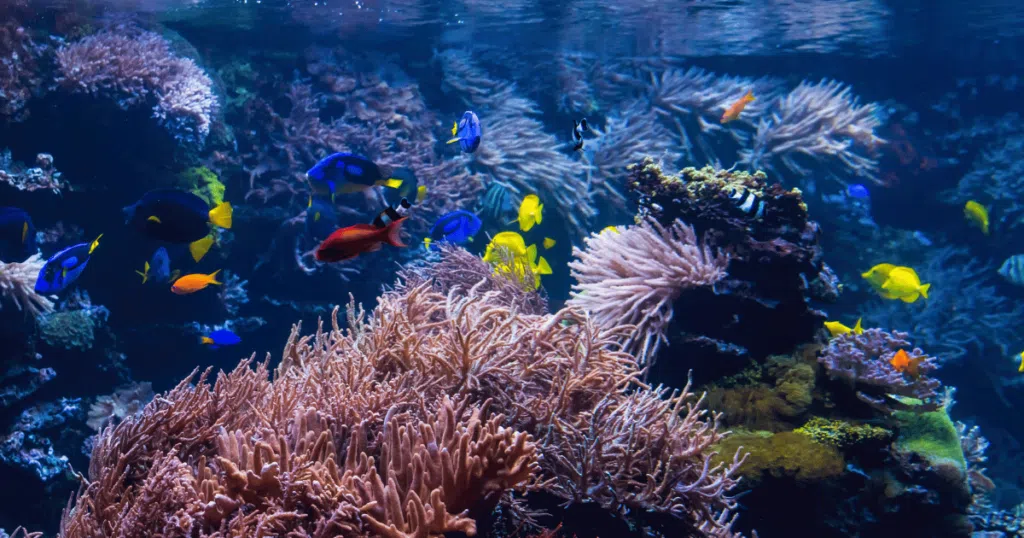
Natural Filtration
Live rock provides excellent natural biological filtration and beneficial organism habitat.
Macroalgae absorbs the leftover nutrients, nitrates, and phosphates.
Choosing the Right Equipment
Lighting
Types of LEDs are economical in energy input, and they can be tuned based on different coral needs.
Filtration Systems
Options Depending on the size of the tank and what one can reasonably afford, all types, including canister filters, sump systems, and even hang-on-back filters, offer benefits.
Heaters and Chillers
Importance Heaters and chillers keep the water at a consistent temperature, essential to prevent stress and disease.
Creating a Regular Maintenance Plan
Daily Tasks: Check temperature and salinity and visually inspect livestock to the best of your ability. following these simple steps to clean a fish tank, you can make it look like beautiful artwork.
Weekly Tasks Include Monitoring water parameters, scrubbing glass, and inspecting equipment. Monthly Tasks Include Changing the water, cleaning filters, and checking gear for wear or damage.

Expert Consultations
When should you seek help from professionals? If you have serious problems or are attempting to work on the tank significantly. Our saltwater aquarium water parameters guide details all essential parameters, testing frequency, and maintenance tips for a flourishing reef tank.
Here are the primary parameters of importance in a saltwater fish-only aquarium:
Temperature: 75-82°F (24-28°C)
Specific Gravity: 1.020-1.025 Salinity
pH: 8.1-8.4
Ammonia: 0 ppm
Nitrite: 0 ppm
Nitrate: <20 ppm
Alkalinity: 8-12 dKH
Calcium: 350-450 ppm
Since maintaining the optimal ppm (parts per million) is quite an effort, here is a list of relevant values in saltwater aquariums:
Calcium: 350-450 ppm
Magnesium: 1250-1350 ppm
Nitrate: <20 ppm
Phosphate: <0.05 ppm
For a saltwater aquarium, the water level will depend on the manufacturer’s appropriate instructions for the tank and filtration system you are using. Usually, the filters and pumps are as high as necessary to function correctly without overflowing or splashing water everywhere. You must keep on top of it and use fresh water (not salt water) to account for evaporation.

